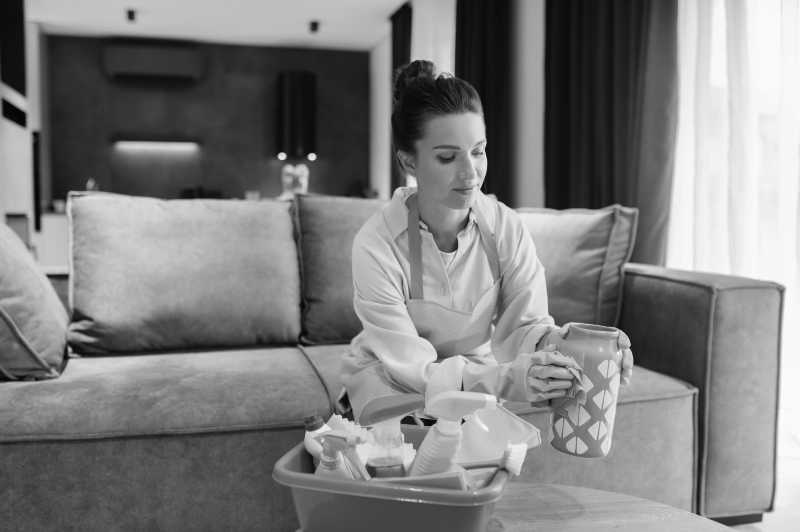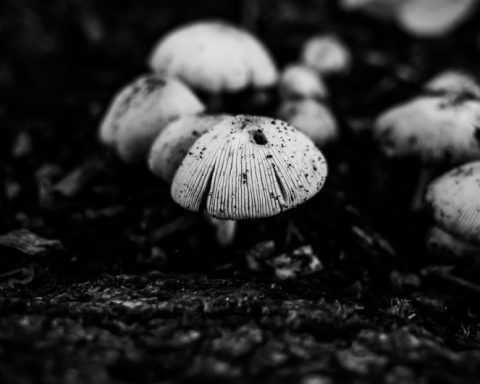You often don’t think about biological hazards in your homes. Though often ignored and indeed microscopic, these dangers can severely affect your health.
Biological hazards are present in homes in different forms, such as bacteria, viruses, mold, and dust mites. They can be very dangerous for your health, causing allergic reactions, respiratory issues, infections, and other illnesses. They may also cause unpleasant odors and an overall unhealthy living environment.
It’s easy to overlook the dangers of these biological hazards. But by understanding their nature, you can keep yourself safe. This article uncovers the complex nature of micro biohazards present in your homes and will guide you on how to protect yourself from them.
Understanding biological hazards
Biological hazards pose serious threats to human health. Common biohazards include bacteria, viruses, fungi, parasites, and toxins—and they can be found everywhere. Bacterial hazards can be found in food, water, and even the surfaces you touch. They can even be carried to your homes by your pets.
Understanding these hazards is important to keep your living spaces safe, and the first step is to learn about the types of biological hazards.
Bacteria
These are the most common biological hazards, producing many illnesses, including food poisoning, pneumonia, and skin infections.
Viruses
These can be extremely deadly. They can even become full-blown pandemics if not controlled in time. The deadliest viruses known in human history include influenza, ebola, and coronavirus (SARS- CoV-2).
Fungi
Fungi mainly attack the immune system, causing various health problems. Mold spores, for example, cause various respiratory problems when inhaled or ingested.
Toxins
Certain fungi and bacteria produce toxic compounds that contaminate food and water, causing severe illnesses that can even ultimately lead to death.
Biological hazards can be transmitted through direct contact (e.g., direct contact with contaminated surfaces, ingesting contaminated food or water, inhaling polluted air). Managing biological hazards in the household is necessary to maintain good health, which you’ll read about in the next section.
Biological hazards in the household
Biological hazards can be closer than you realize. Numerous hazards exist even in your homes, often unnoticed.
Viruses and bacteria often hide in everyday objects and may be infectious. Mold and mildew are present in damp places in your house, like bathrooms, kitchens, and basements, and may be harmful to your health if not removed in time. Also, hazards like dust mites are present in bedding and carpets and may be a source of allergies and asthma in people.
Other actions that can lead to the growth of bacteria include improper storage and handling of food at home. If raw vegetables and meat are not cooked properly, they can house harmful bacteria like Salmonella, E. coli, and Listeria monocytogenes. This biological food safety hazard causes severe gastrointestinal issues, which can eventually lead to death in some cases.
Pets, though beloved family members, can introduce parasites like fleas, ticks, and worms into the household. Their saliva can also pose risks, potentially causing respiratory and skin problems.
Preventing and managing household biological risks
Different biological hazards are present in your homes, often unseen or even growing. Managing them is important to creating a healthy environment, and this section will teach you how.
Practice good hygiene habits
Maintaining good hygiene is important. The first step involves proper hand washing with soap and water or hand sanitizers. Hand sanitizers containing 60% alcohol are mostly recommended for safe use.
Proper hand washing includes the following steps.
- Wet your hands with clean water and apply soap.
- Rub them together, including the back of your hands, fingers, webbing, and nails.
- Scrub them for 20 seconds while singing a happy birthday song to keep track of time.
- Rinse your hands thoroughly.
- Dry them with a clean towel.
Ensure personal cleanliness
Regular bathing removes dirt, sweat, and dead skin cells. Use clean towels and change them regularly when they become damp.
Also, washing your clothes in hot water with a good detergent can help get rid of harmful organisms. Washing clothes is important as it ensures that harmful organisms are not transferred from one person to another or any other surface.
Practice safe food handling
To protect yourself from foodborne diseases, it’s critical to practice safe food handling practices. These practices ensure proper storage and cooking temperatures and safe defrosting of frozen food. To avoid the growth of bacteria, defrosting can be done in the refrigerator, under cold running water, or in the microwave.
Cross-contamination is another major problem. Use separate cutting boards for cutting fruits, vegetables, and fresh meat. Please always ensure that you wash your fruits and vegetables before consumption.
Lastly, it is very important to keep your leftovers in airtight containers and reheat them to a certain temperature to kill potentially harmful bacteria.
Read more: How Refrigeration Saves Lives and Prevents Foodborne Illnesses
Implement cleaning and disinfection strategies
Routine cleaning is important, but in addition to that, implementing disinfection strategies is essential to eliminate harmful bacteria from household surfaces. High-touch areas, including door knobs, light switches, faucets, etc, should be regularly disinfected.
Keep in mind that surfaces in bathrooms and kitchens that are mostly moist nourish the growth of microorganisms and may require frequent cleaning and disinfection.
Read more: A Practical Guide to Maintaining Cleanliness and Safety in the Kitchen
Ensure proper ventilation and address moisture issues
Incorporating ventilation practices in your houses, such as opening windows and using exhaust fans, reduces moisture and inhibits fungal growth in areas that are prone to dampness.
Regular inspection of leaks or water damage can also help prevent the growth of mold, which can damage the respiratory tract.
Maintain pet hygiene
Pets can be a source of biological hazards, and if you have pets at home, pet hygiene should never be overlooked. You should regularly groom your pet. Regular grooming includes brushing and bathing, which helps reduce shedding and dander.
Routine veterinary care also helps reduce parasitic infections. You should clean and disinfect your pet’s bedding and litter boxes regularly to maintain a healthy environment for both you and your pet.
In conclusion
Biological hazards are dangerous for human health, but their presence in your daily living environment often goes unnoticed. By raising awareness about these hazards and implementing protective measures, you can defeat them and keep yourself healthy.
It is time you took charge of the cleanliness of your houses and committed to maintaining strict hygiene practices, safe handling, and disinfection routines for your well-being. A clean today will lead to a healthier tomorrow.
If you would like to see more resources on biological hazards, check out the Personal Resilience Science Labs. The lab uses the research of the Institute for Life Management Science to produce courses, certifications, podcasts, videos, and other tools. Visit the Personal Resilience Science Labs today.
Photo by zinkevych on Freepik



